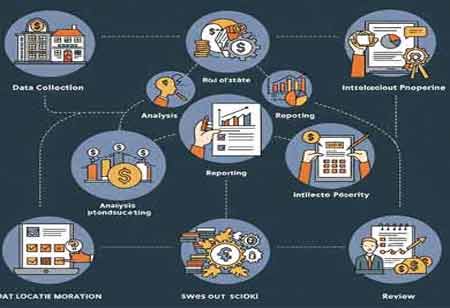CLOSE
Specials
- CPA Firms Canada
- Financial Asset Management APAC
- FinTech Canada
- RIA Advisory Europe
- Financial Licensing Europe
- Mortgage Broker
- Financial Risk Management Europe
- RegTech Europe
- Treasury Management Europe
- Trading Solutions APAC
- Digital Banking Latam
- Escrow Services
- Regtech APAC
- Corporate Advisory APAC
- Investment Banking APAC
- Financial Risk Management APAC
- Investment Banking Canada
- Wealth Management MENA
- Investment Advisory APAC
- Investment Advisory Europe
- Financial Brokerage Firm APAC
- FinTech
- Wealth Management
- Proprietary Trading Europe
- Payment Solution
- Lending mangment
- Financial Health Europe
- Investment Management Latam
- Financial Fraud
- Alternative Investments Canada
- Broker Dealer Firms Canada
- Payment Solution Europe
- Broker Dealer Firms
- Financial Compliance
- Investment Management
- Financial Planning / Retirement
- FinTech Europe
- Mergers and Acquisitions Consulting
- Debt Collection Agencies
- Claim Adjusting
- Wealth Management APAC
- Valuation Services Canada
- Investment Services
- Mergers and Acquisitions Consulting Canada
- CPA Firms
- Equipment Financing
- Mergers and Acquisitions Consulting APAC
- Claim Adjusting APAC
- Digital Banking Europe
- CFO Services
- Debt Collection Agencies Europe
- Wealth Management Europe
- Mergers and Acquisitions Consulting Europe
- Financial Restructuring Europe
- Financial Portfolio Management Canada
- Business Loan
- Payment and Card Latam
- Wealth Management Latam
- Mergers and Acquisitions Consulting Latam
- Tax Advisory Canada
- Trading Solutions Europe
- Alternative Investments
- Digital Insurance Europe
- Financial Marketing
Weekly Brief
×Be first to read the latest tech news, Industry Leader's Insights, and CIO interviews of medium and large enterprises exclusively from Financial Services Review
Thank you for Subscribing to Financial Services Review Weekly Brief
Quantitative Methods in Financial Risk Management
The financial sector relies on strategic risk-taking, yet minimizing potential losses is crucial.

By
Financial Services Review | Friday, September 20, 2024
Stay ahead of the industry with exclusive feature stories on the top companies, expert insights and the latest news delivered straight to your inbox. Subscribe today.
Quantitative methods in financial risk management, including Value at Risk, Expected Shortfall, Monte Carlo Simulation, Copulas, and Credit Risk Models, are evolving with Machine Learning algorithms and regulatory changes.
FREMONT, CA: The financial sector relies on strategic risk-taking, yet minimizing potential losses is crucial. This underscores the importance of quantitative methods in financial risk management. Using mathematical models and statistical tools, institutions can enhance their ability to evaluate, quantify, and manage financial risks with heightened accuracy and effectiveness.
Financial markets are complex ecosystems influenced by many factors, making robust decision-making essential. While qualitative assessments provide valuable insights, they often lack the objectivity necessary for sound judgments. Quantitative methods offer a solution by incorporating historical data and statistical analysis to remove subjectivity from risk assessment. These methods also enable the quantification of qualitative risks, facilitating comparison and prioritization. Additionally, quantitative models allow institutions to simulate various economic scenarios, providing insights into their vulnerability under stress. Through estimating potential losses, quantitative methods guide optimal capital allocation, enhancing risk mitigation strategies in financial markets.
Core Quantitative Models and Techniques
Financial risk management employs diverse quantitative models and techniques to mitigate risks effectively. Among these tools, several critical methodologies stand out:
Value at Risk (VaR) is a widely utilized metric that estimates the maximum potential loss within a specific confidence level over a given time horizon. VaR aids in assessing market risk by evaluating the possible losses resulting from price fluctuations.
Expected Shortfall (ES) offers an alternative perspective to VaR by calculating the average loss exceeding the VaR threshold. This provides a more comprehensive understanding of potential losses across various scenarios.
Monte Carlo Simulation is a powerful technique that simulates numerous random market scenarios to derive a probability distribution of potential outcomes. It is beneficial for stress-testing portfolios and evaluating complex risks.
Copulas are statistical tools essential for measuring dependence between different assets. Understanding such interdependencies is critical for adequate portfolio diversification, as it enables insights into how a decline in one asset class might impact others.
Credit Risk Models assess the likelihood of a borrower defaulting on a loan by considering financial history, credit score, and prevailing economic conditions. These models play a crucial role in managing credit risk exposure effectively.
The landscape of quantitative risk management undergoes continual evolution, marked by several notable trends and considerations. One such trend is the increasing integration of Machine Learning (ML) algorithms, which can analyze extensive datasets and unveil latent patterns, enhancing risk prediction capabilities. Additionally, there is a growing emphasis on Big Data Integration, whereby including diverse data sources, such as social media sentiment or satellite imagery, enriches the scope and accuracy of risk assessments. Model Risk Management emerges as another critical consideration, as organizations increasingly rely on models for decision-making, necessitating rigorous validation measures like backtesting and scenario analysis to ensure their accuracy and robustness. Furthermore, the regulatory landscape with regulatory bodies continuously adapting to address the challenges posed by financial innovation. For institutions employing quantitative risk management techniques, staying abreast of these evolving regulations is imperative to ensure compliance and effectiveness.
Quantitative methodologies form the cornerstone of contemporary financial risk management. Leveraging data and mathematical models empowers institutions to make well-founded decisions, optimize capital deployment, and navigate the economic environment. As this discipline progresses, integrating cutting-edge technologies such as machine learning and big data will augment the precision and efficacy of quantitative risk management strategies.

Copyright © 2025 Financial Services Review. All rights reserved





